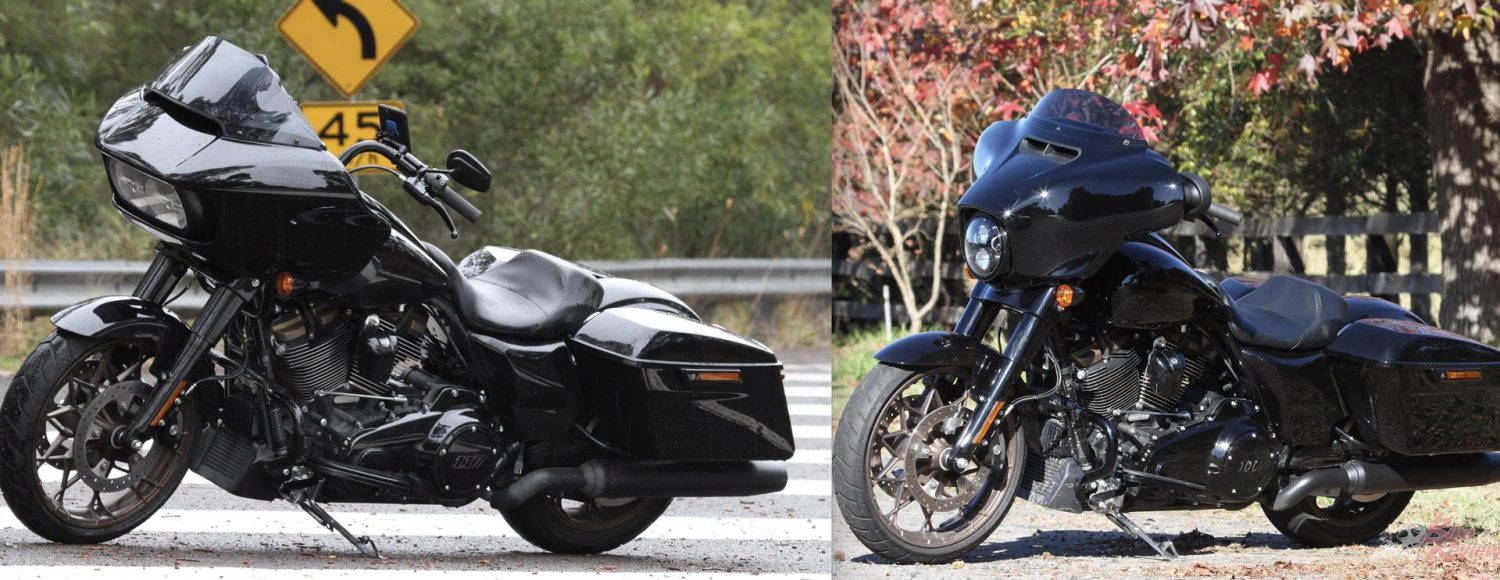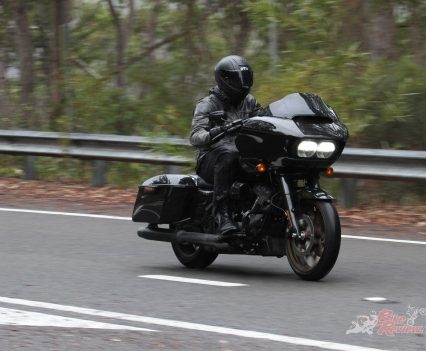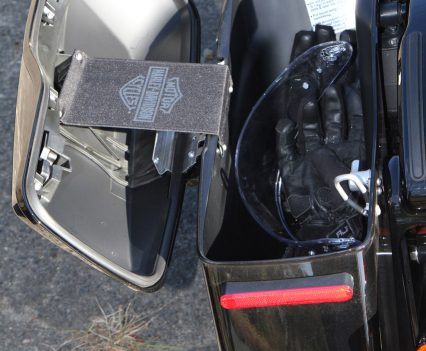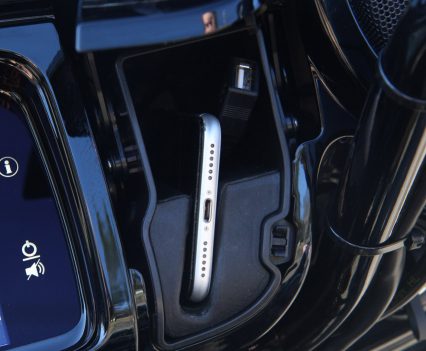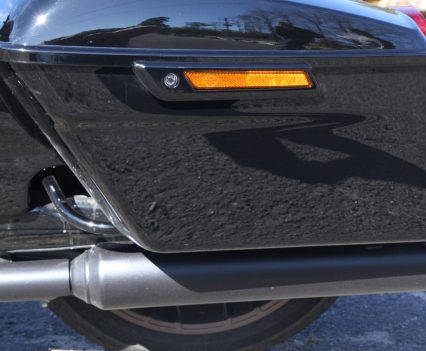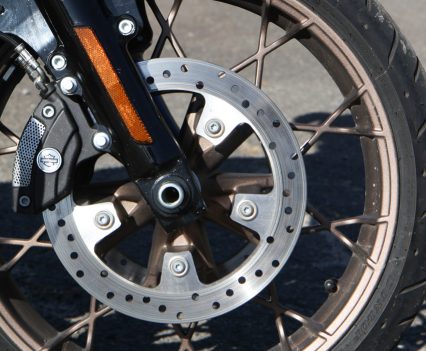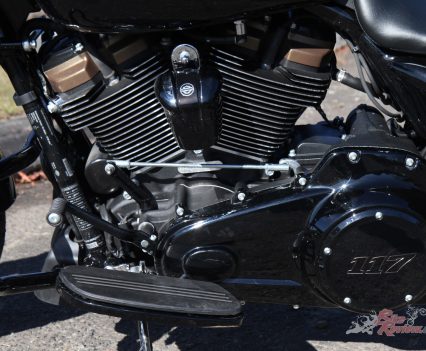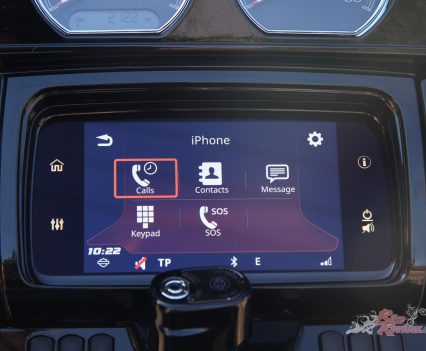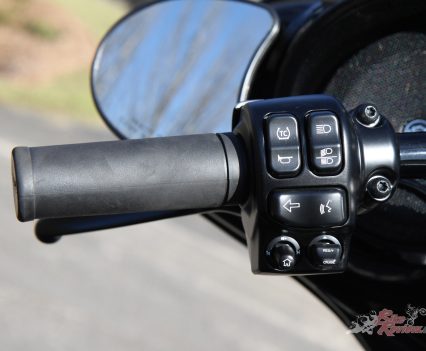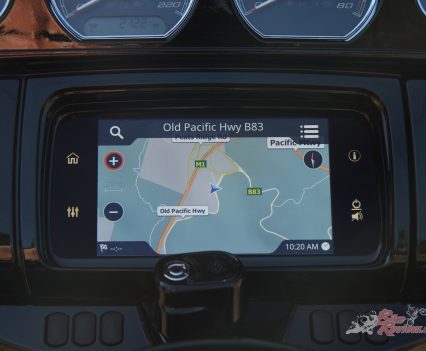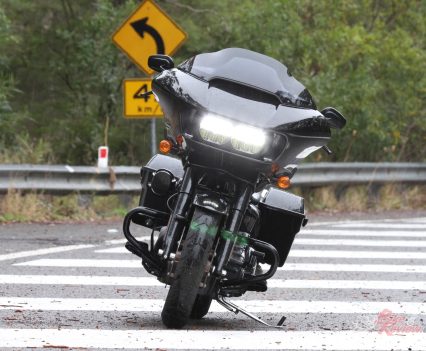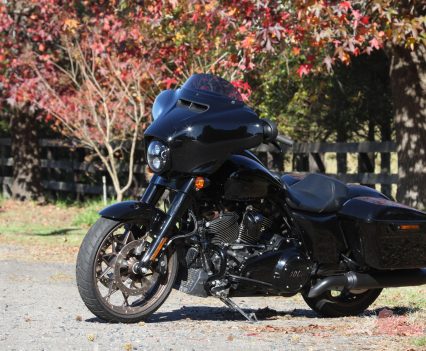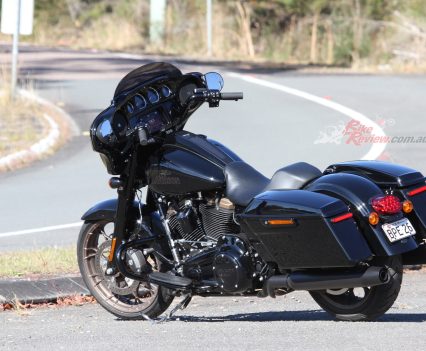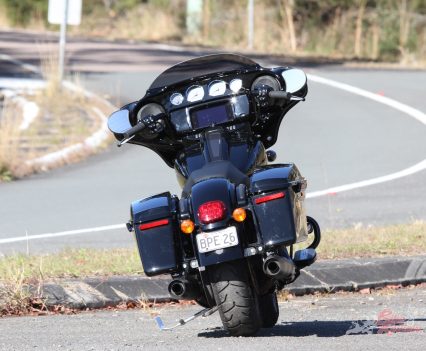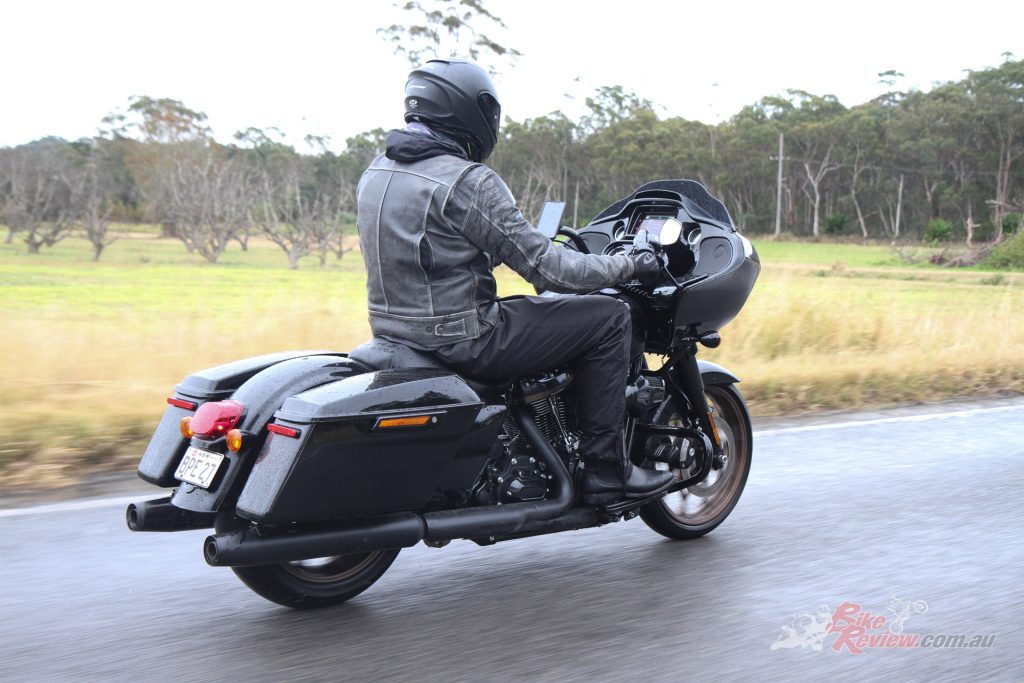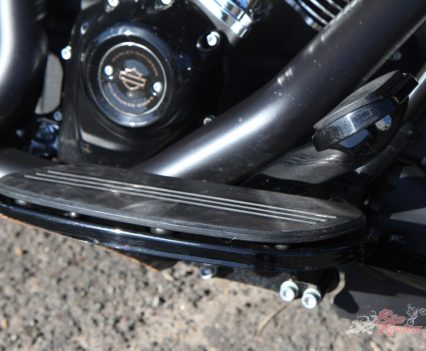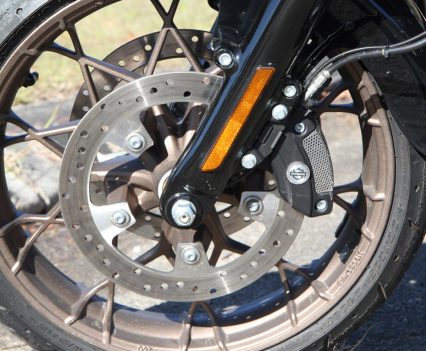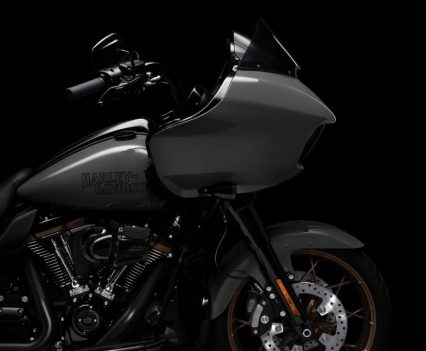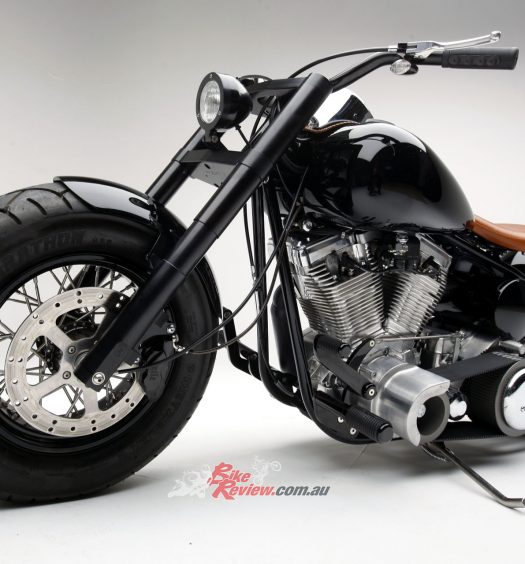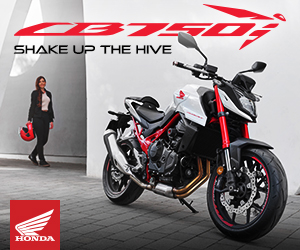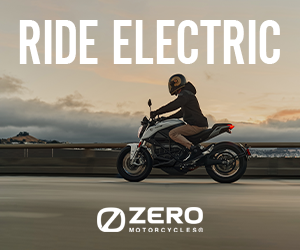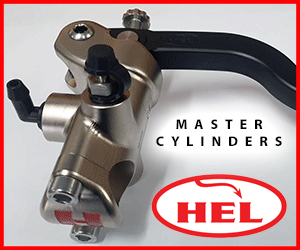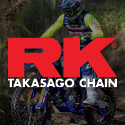Nick has been spending time with the 2022 Harley-Davidson baggers, check out how the Street Glide ST and the Road Glide ST compared to each other... Photos: Heather Ware.
You can’t deny that these are both badass bikes, but it is unlikely you will be heading down to your local dealership to buy both beasts. If you are in the market for a 2022 Harley-Davidson and are tossing up between the Road Glide ST or Street Glide ST, this might help…
Check out Nick’s Street Glide ST review here… And his Road Gide ST review here...
I spent four weeks in total cruising the freeway, backroads, and local streets on the two bikes. Realistically, the bikes are almost identical. They both are powered by the air/oil-cooled Milwaukee-Eight 117ci, the same 6-speed transmission, the same cable-clutch, and the same rider-safety technology and entertainment systems.
I have never been a cruiser guy, always opting for the sports or adventure bike options, but the 2022 Harley’s might have just convinced me otherwise. Harley-Davidson has definitely done something right this year with these V-twin baggers, but what is it exactly?
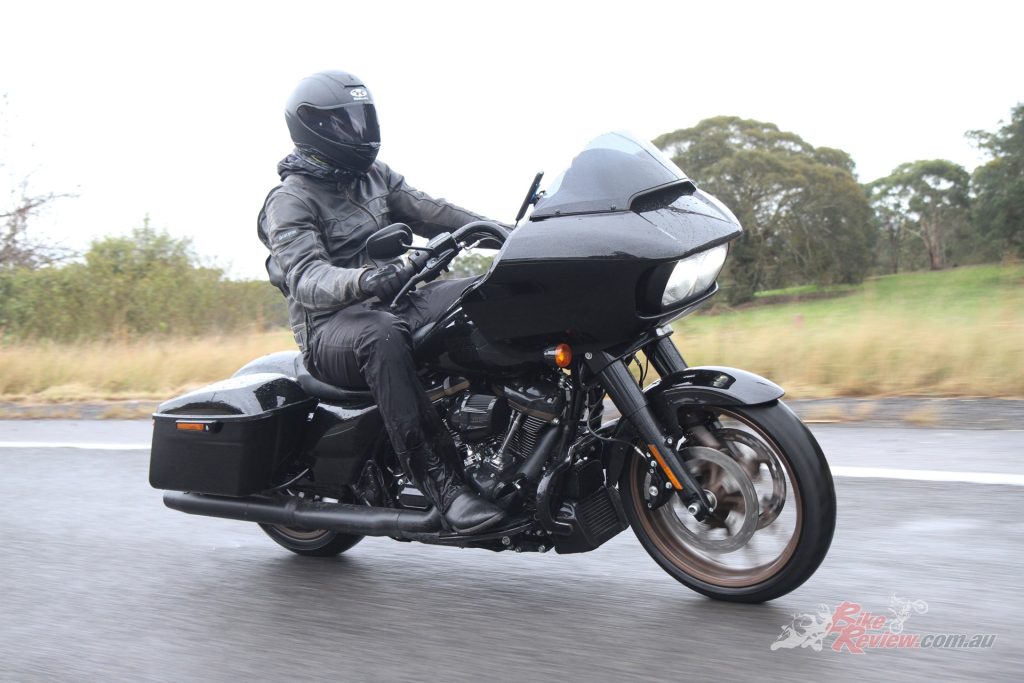
The Road Glide ST and Street Glide ST are essentially the same bike with a very styling and ergonomic differences!
Check out Nick’s Road Glide ST review here…
Comparing the Road Glide ST and the Street Glide ST is difficult, and in the end, really comes down to personal preference. In terms of styling, I personally prefer the solid-mounted Road Glide ST front fairing, while my mates think it’s an eyesore, and prefer the batwing Street Glide ST.
The difference in storage is negligible, with slightly deeper glove compartments on the Road Glide ST, while differences in colour options are non-existent, its either vivid black, or gunship grey (which looks wicked!). Both bikes have the exact same performance specs, are powered by the same 117ci V-twin, and pull-up with the same rotors and Brembo callipers.
There’s a couple of small quirks you notice after riding the two bikes back-to-back. The Road Glide ST feels slightly lighter, and nimbler despite actually being heavier on paper! I’d have to argue that it’s the solid-mounted front fairing, rather than the fork-mounted on the Street Glide ST.
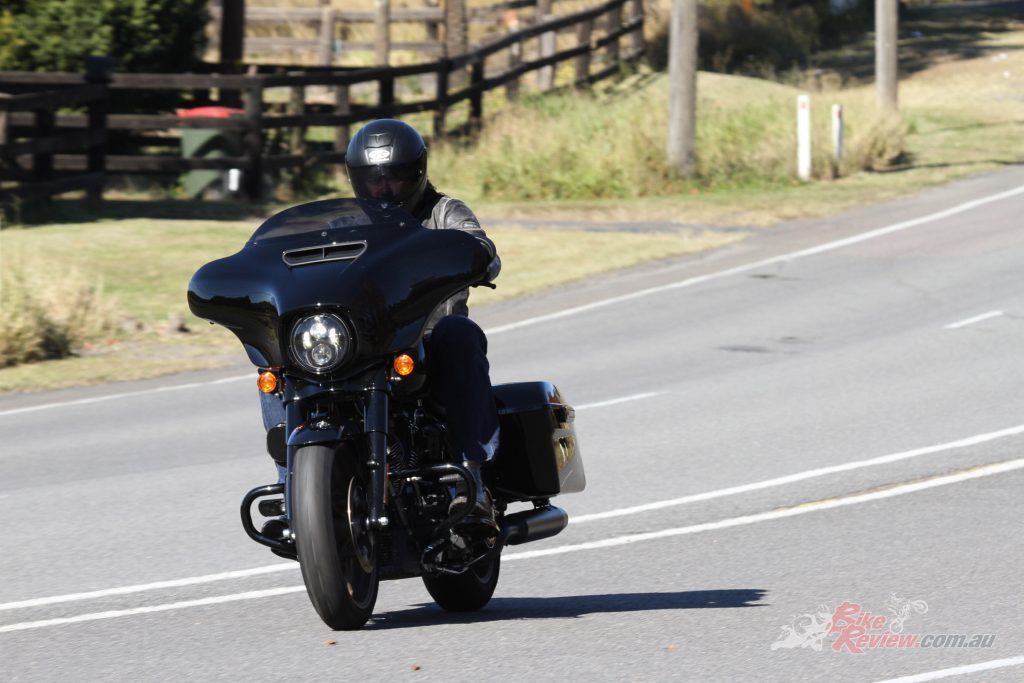
Despite both bikes being very similar on paper, small changes like the fairing can affect the handling of the machine!
The wind resistance and added weight of the speakers, touch screen display and whatever you’ve stored in the glove compartment has to add some weight to the steering. If you aren’t riding the two back-to-back, you’d be hard pressed to even notice, I guarantee.
After pushing it harder on both bikes, there isn’t any real noticeable difference in handling, responsiveness, or power output between the two. I’d even go so far as to say I wouldn’t know which bike I was on if I didn’t explicitly check… The added height of the ST models allows for a couple of extra degrees in lean angle, but you’d be hard pressed to notice while the floorboards are scraping.

“After pushing it harder on both bikes, there isn’t any real noticeable difference in handling, responsiveness, or power output between the two.”
Both bikes offer the same technology, which in some respects is fantastic, and in others is dated and could do with a modern update. There aren’t any ride modes on either bike, but the traction control offers a number of features that limit power output to the rear wheels for rainy conditions.
I’m confused as to why Harley went with the cable clutch on both models. For me, it does the job, but a hydraulic setup would be far superior, and require less adjustment over the life of the bike. The cable setup isn’t quite as responsive as I’d have liked, and there’s noticeable differences between bikes, likely due to cable stretch and other mechanical factors.
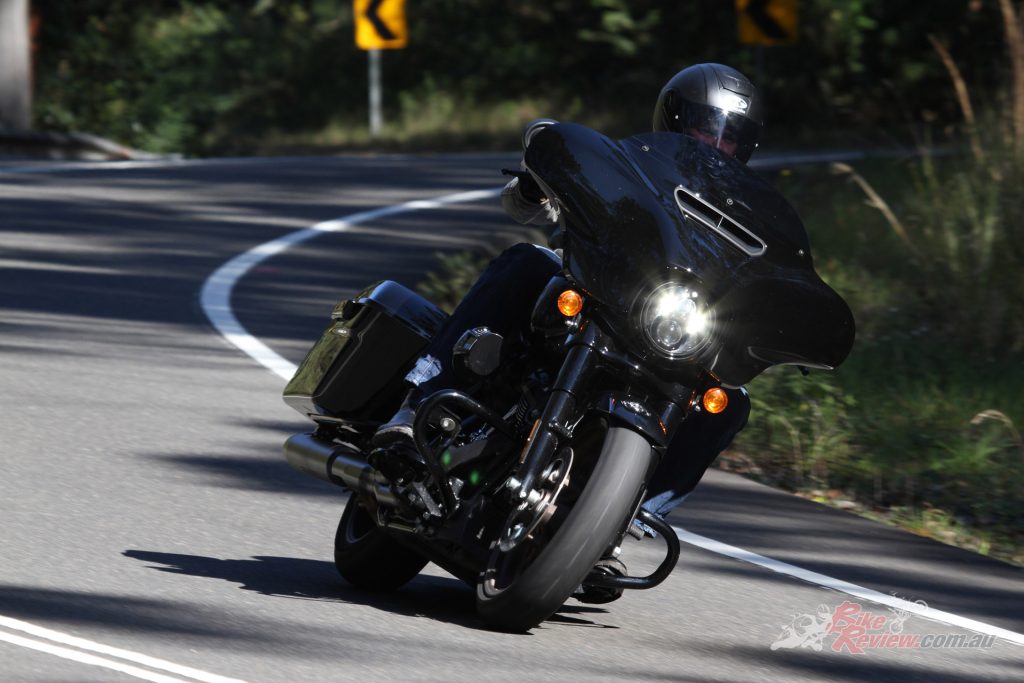
On both machines, Nick mentioned have trouble with the positioning of the air-intake. Getting in the way of his leg.
There isn’t a lot more to compare on these two near-identical bikes. You could argue that the Road Glide ST would make a better tourer, with its more spacious front fairing and lighter feeling front end. But it’s the agility of the Road Glide ST that would come in handy when pushing it harder round the canyon twisties, right?
Both bikes provide a strong foundation for someone wanting to get into the performance bagger scene. I wouldn’t quite say you own a performance bagger yet, but with some modification you’ll be there.
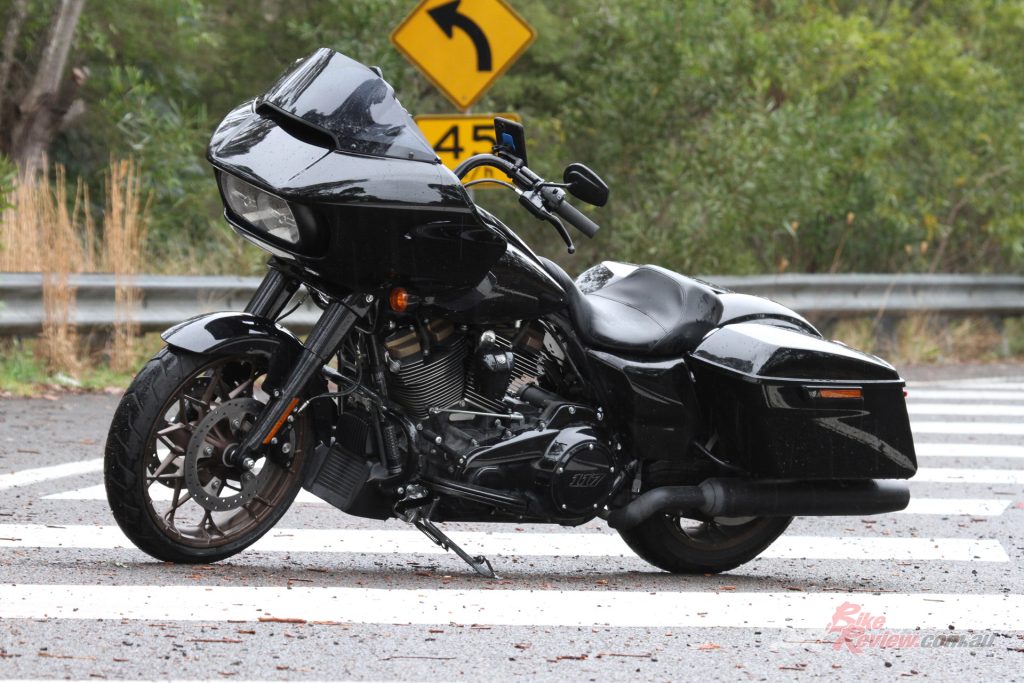
Coming in at $45,995 each, these machines aren’t cheap. But, you get some serious technology and an awesome looking machine…
I’d love to own either bike, but they’re a little outside my price bracket, and will be for quite a while I’d say. At $45,995, it’s a house deposit or a new Harley. I know what I’d prefer, but the misses would say otherwise. The best I can hope for is an earlier, used model, but with the price of used cars and bikes at the moment, that purchase is still a while away.
Regardless of which model you choose, it’s the upgrades and added extras that will allow you to tailor the Road or Street Glide ST into the machine you’re after, either option will be a fantastic choice, and it really comes down to personal preference in the end.
Tech Talk
The Milwaukee-Eight engine, the ninth Big Twin design in the company’s storied lineage, is a clean-sheet design that combines the classic look, sound and feel of Harley-Davidson Big Twin engines with improvements in every aspect of engine performance. For 2022 Harley have gone with the 117ci engine over last years 114ci.

The Milwaukee Eight has been the heart for many Harley-Davidson models for over six years now, and it’s still an awesome engine.
Retaining the classic 45-degree V-Twin cylinder angle, the Milwaukee-Eight engine produces 10 percent more torque (varies per model) than previous year models and features four-valve cylinder heads that offer 50 percent more intake and exhaust flow capacity.
The Milwaukee-Eight engine is counter-balanced to cancel 75 percent of primary vibration at idle, retaining the classic feel of a Harley V-Twin while being very smooth at highway speeds. A new heat management strategy for all Milwaukee-Eight engines improves rider and passenger comfort.

Four-valve cylinder heads (two exhaust and two intake valves per head, eight total) promote airflow through the engine and contributes to power output.
Four-valve cylinder heads (two exhaust and two intake valves per head, eight total) promote airflow through the engine and contribute to power output, and dual spark plugs ensure more complete combustion to maximise power and efficiency. Advanced cylinder head design, dual knock sensors, and precision cooling allow a 10.0:1 compression ratio for strong torque output and acceleration, while a single camshaft helps reduce mechanical noise so a richer exhaust tone can predominate.
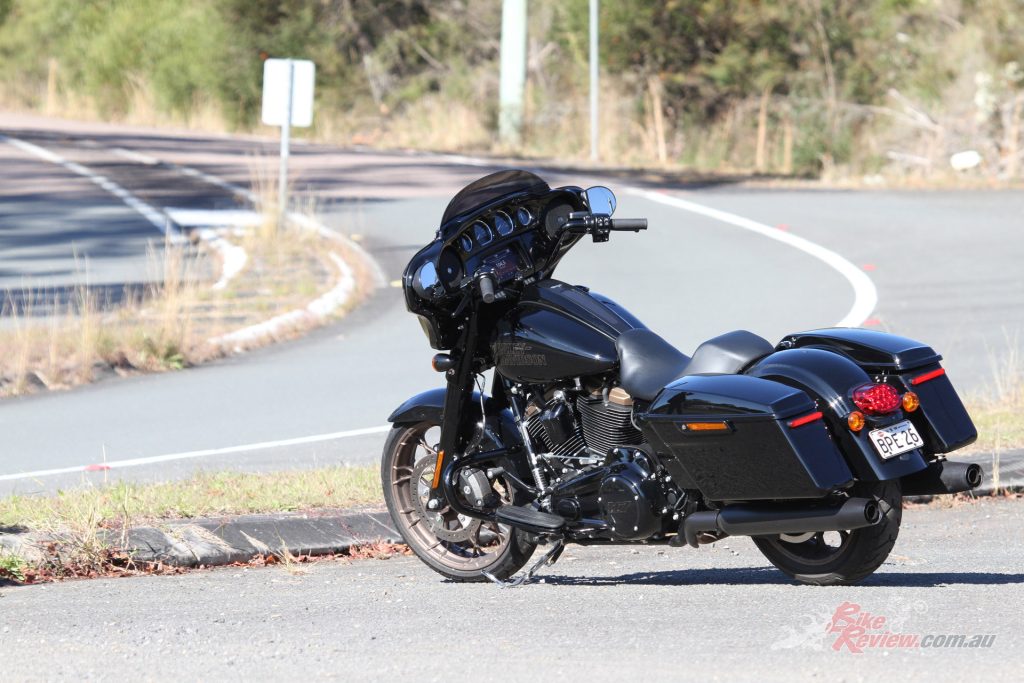
Emulsion-technology rear shock absorbers feature a single knob to hydraulically adjust pre-load for optimal ride.
Emulsion-technology rear shock absorbers feature a single knob to hydraulically adjust pre-load for optimal ride and control. The 49mm forks with dual bending valve suspension technology deliver linear damping characteristics for a smooth ride. Reflex linked Brembo brakes with ABS are standard.
Electronic cruise control holds a steady speed for comfort on long rides. A Daymaker LED headlamp pushes out an impressive punch with a bright-white beam that lights up the road. Smart Security System with proximity-based, hands-free security fob offers peace of mind.

Massive TFT screen with a heap of assists systems, a GPS and plenty of handsfree options for your smartphone.
Introduced first onto the 2020 model, Harley-Davidson’s RDRS assist system adds an even further degree of safety for the rider. The functions are as follows:
- Electronically Linked Braking (ELB) applies braking effort to both wheels when the rider uses either the hand lever (front) or foot pedal (rear) brake control, which can help many riders achieve better braking performance.
- Cornering Electronically Linked Brakes (C-ELB) takes into account the motorcycle lean angle. C-ELB will alter the proportioning of brake pressure between the front and rear brakes when braking while cornering in an attempt to improve the ability of the bike to maintain the rider’s intended path.
- Anti-lock Braking System (ABS) is designed to prevent the wheels from locking under braking and helps the rider maintain control when braking in a straight-line, urgent situation.
- Cornering Anti-lock Braking System (C-ABS) is a variant of ABS that takes into consideration the lean angle of a two-wheel motorcycle, or the lateral acceleration of a Trike model. The brake pressure required to limit wheel slip when cornering is typically or lower than the pressure required under straight line operation.
- Drag-Torque Slip Control System (DSCS) is designed to reduce excessive rear-wheel slip under deceleration, which typically occurs when the rider makes an abrupt down-shift gear change or decelerates on wet or slippery road surfaces.
- Cornering Drag-Torque Slip Control System (C-DSCS). On models equipped with C-DSCS the action of DSCS may be tailored when cornering, based on detected lean angle (two-wheel motorcycles) or lateral acceleration (Trike models).
- Traction Control System (TCS) is designed to prevent the rear wheel from excessive spinning under acceleration when travelling in a straight line.
- Cornering Traction Control System (C-TCS) is designed to prevent the rear wheel from excessive spinning under acceleration when going straight or cornering.
- Vehicle Hold Control (VHC). The primary function of VHC is to keep the motorcycle from rolling, making it easier to ride away when starting on a hill, a bridge or a parking ramp.
Everything is controlled through Harley-Davidson’s awesome 5.25 full colour TFT screen. Options can be changed through the tactile buttons on the bars, which also controls the cruise control, or the touch-screen itself. Your smartphone can be connected via Bluetooth to display notifications and play music. Other features include a Tyre Pressure Monitoring system (TPMS) and a USB charging port.
There are two paint options – Vivid Black or Gunship Gray. The front fender is trimmed for a sporty profile and lighter look and standard-length saddlebags replace the extended bags on Street Glide Special model. A Heavy Breather intake with forward-facing exposed air cleaner element reinforces performance-first styling, while the new solo seat gives the Street Glide ST and Road Glide ST a lean and aggressive look.
The Road Glide ST takes everything from the Street Glide and adds a distinctive and aerodynamic shark nose Road Glide fairing which features triple splitstream venting to limit head buffeting. The fairing is topped with a low-profile dark windshield and holds dual Daymaker LED headlamps that push out an impressive punch with a bright-white beam that lights up the road. A low-profile engine guard and tank console combine to give the Road Glide ST trim lines.
2022 Harley-Davidson Road Glide ST [Street Glide] Specifications
Price: From $45,995 (ride away)
Colours: Vivid Black or Gunship Gray
Warranty: Two-years unlimited km
Service: 1600km then every 8000km
Claimed Power: N/A
Claimed Torque: 168Nm@3500rpm
Wet Weight: 382kg [369kg]
Fuel capacity: 22.7L
Engine: Air-cooled Milwaukee-Eight 117 V-Twin, 1923cc, 103.5 x 114.3mm bore x stroke, 10.2:1 compression ratio, ESPFI, two-into-one-into-two exhaust
Gearbox: Primary drive: 34/46. Six-speed ratios – 1st: 9.593, 6.65, 4.938, 4.0, 3.407, 6th: 2.875 Final Belt 32/68 Clutch: Wet multi-plate, cable actuation
Chassis: Mild steel; tubular frame; two-piece stamped and welded backbone; cast and forged junctions; twin downtubes; bolt-on rear frame with forged fender supports; MIG welded.
Rake: 26° Trail: 173mm
Suspension: 49mm dual bending valve forks, Premium standard height hand-adjustable rear suspension
Brakes: 300mm rotors, Four-piston fixed calipers (f), 300mm rotor, two-piston floating caliper (r), ABS
Wheels & Tyres: Bronze Prodigy wheels, 130/60 – 19in (f), 180/55 – 18in (r), Dunlop
DIMENSIONS
Wheelbase: 1625mm
Seat height: 715mm [710m]
Ground clearance: 140mm [135mm]
Overall Length: 2405mm [2400mm]
Lean Angle: 32/31 degrees
Instruments: Multi-language multi-function touch screen digital full colour TFT display, handlebar mounted controls, Central Screen, BOOM! Audio System with GPS and touchscreen, charging port in fairing, LED lighting all around.
Editor’s Note: If you are reading this article on any website other than BikeReview.com.au, please report it to BikeReview via our contact page, as it has been stolen or re-published without authority.

